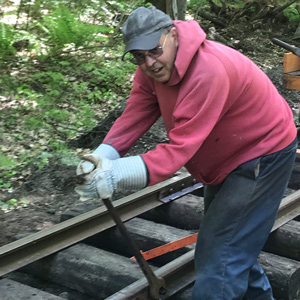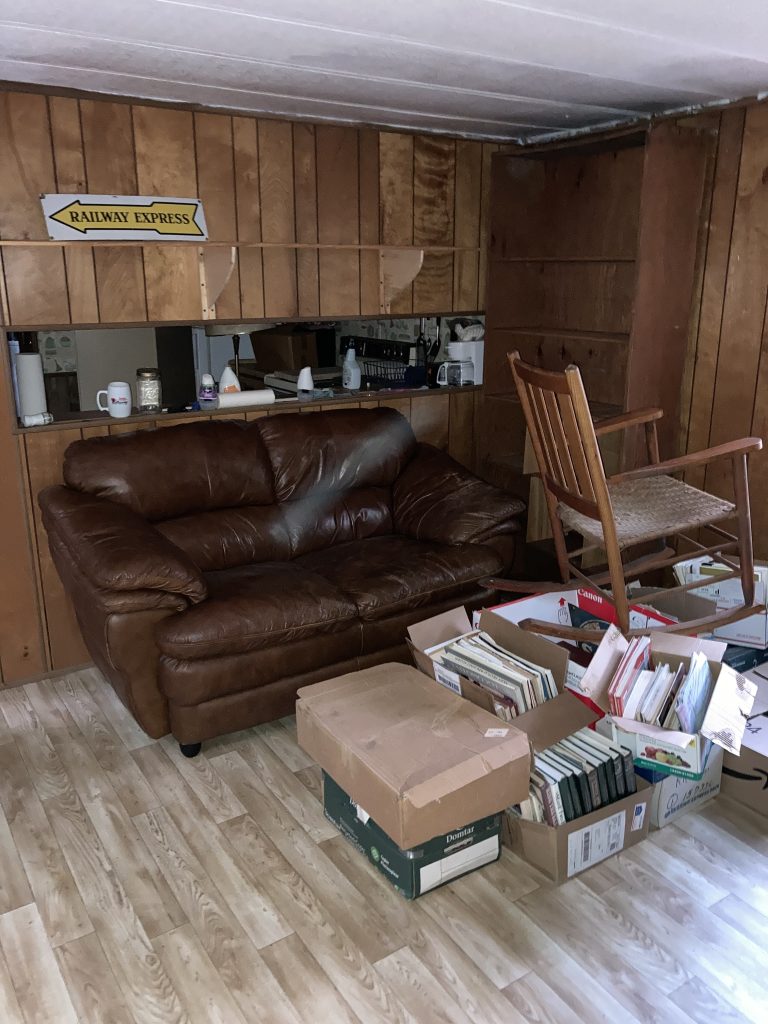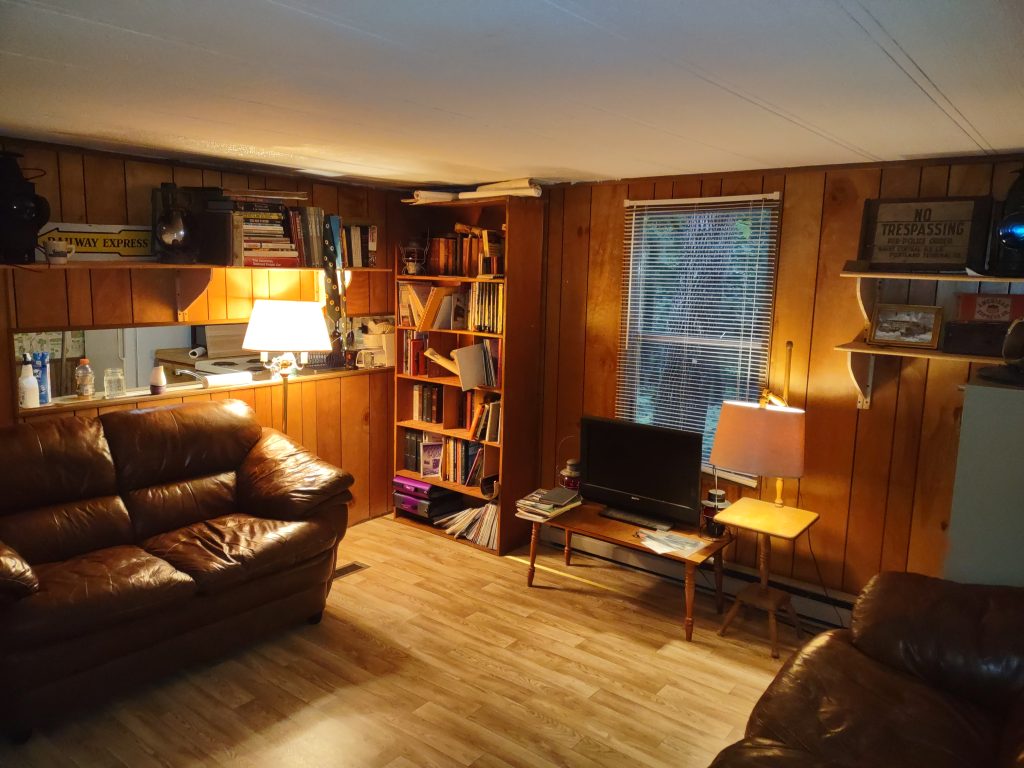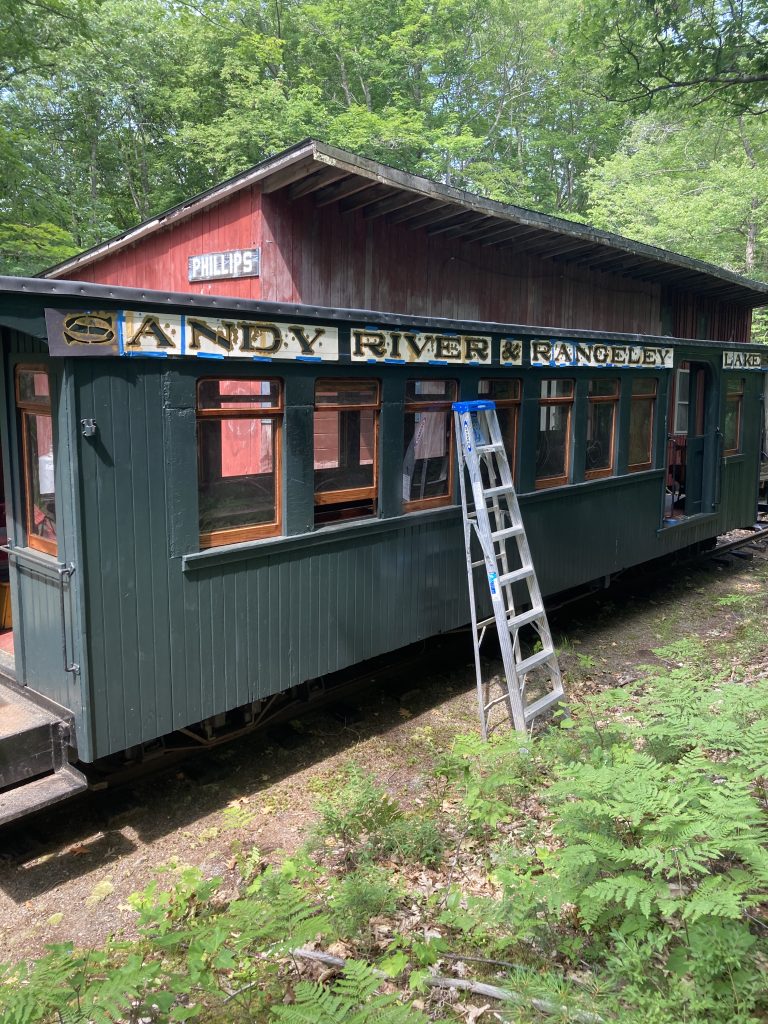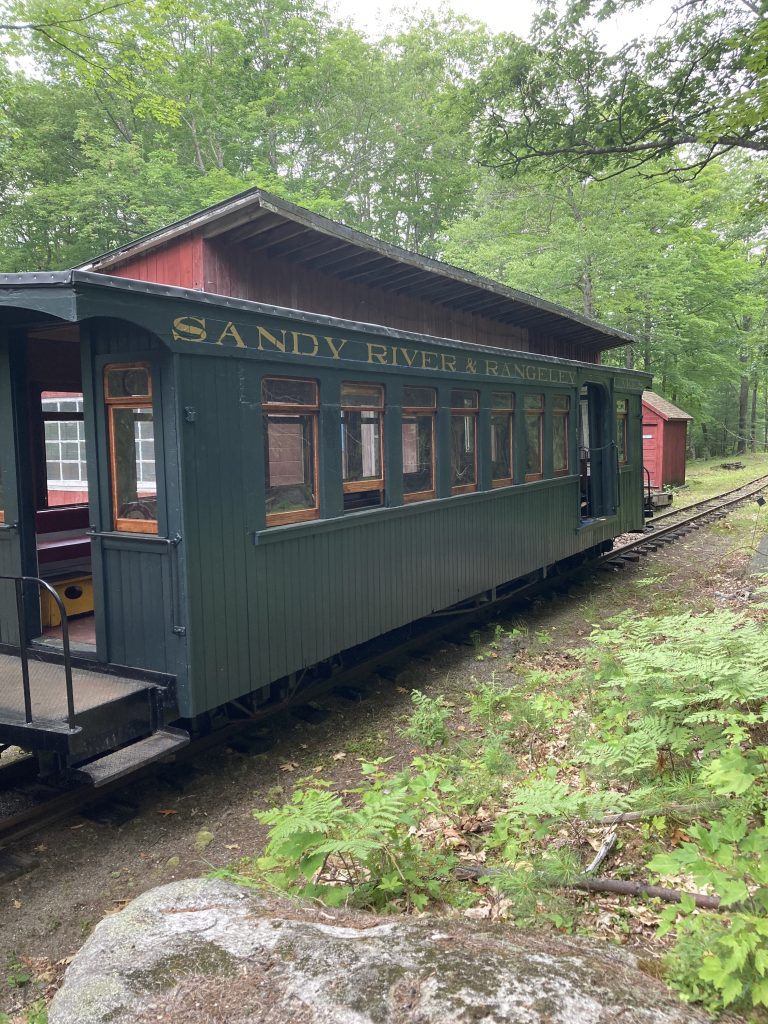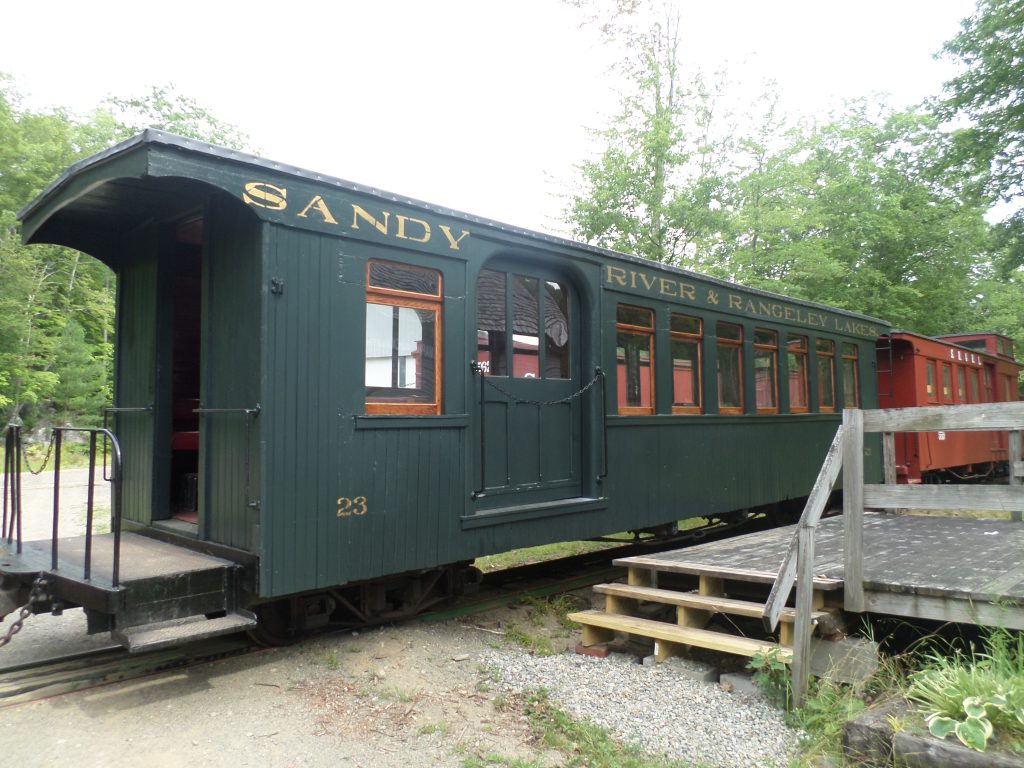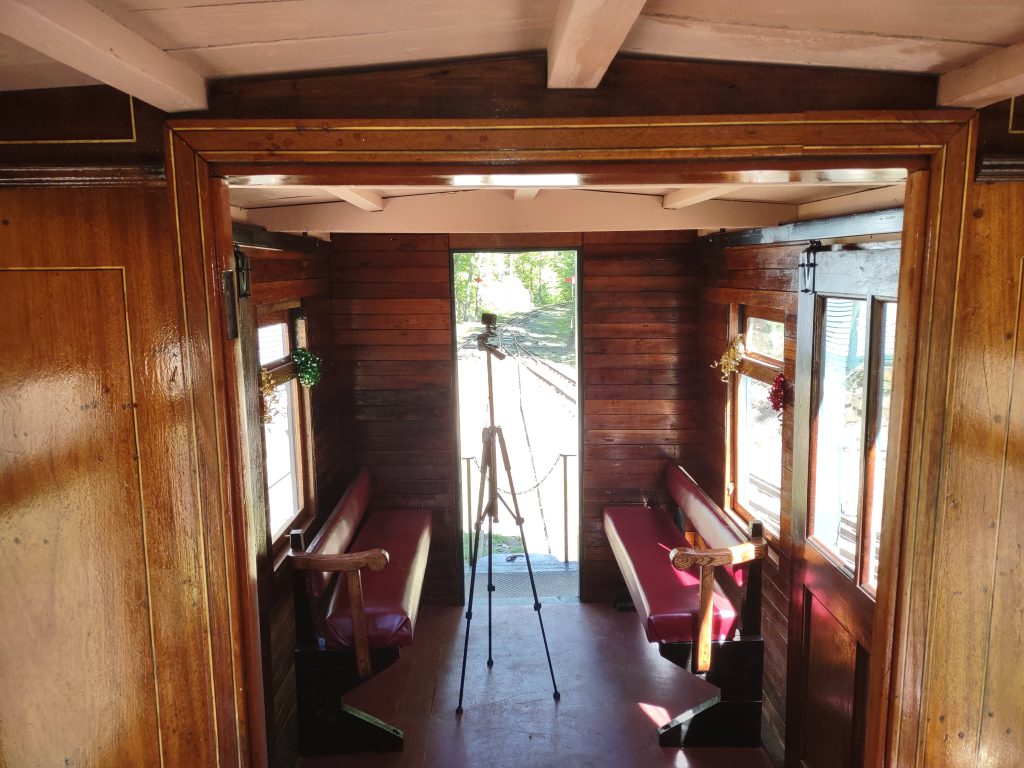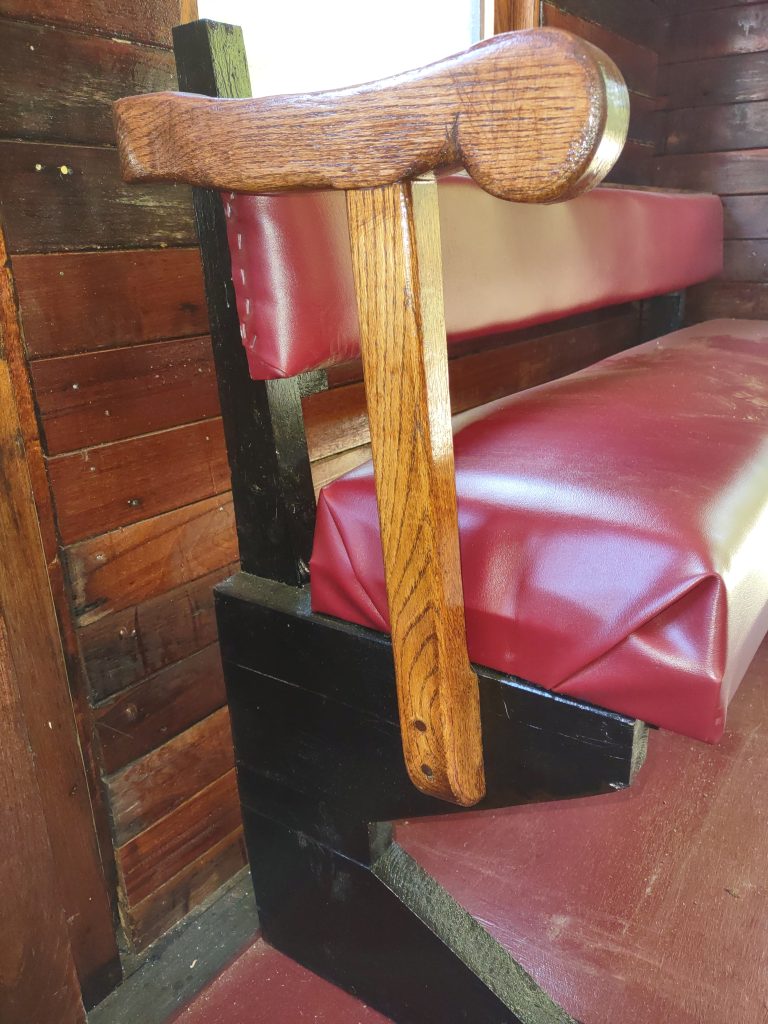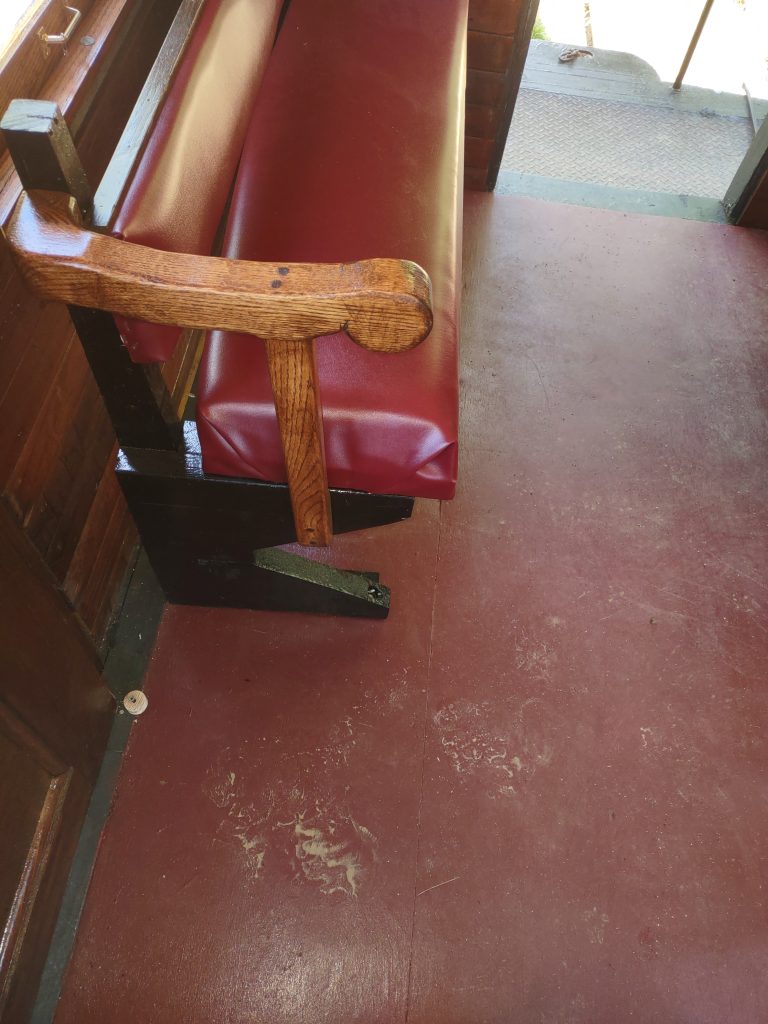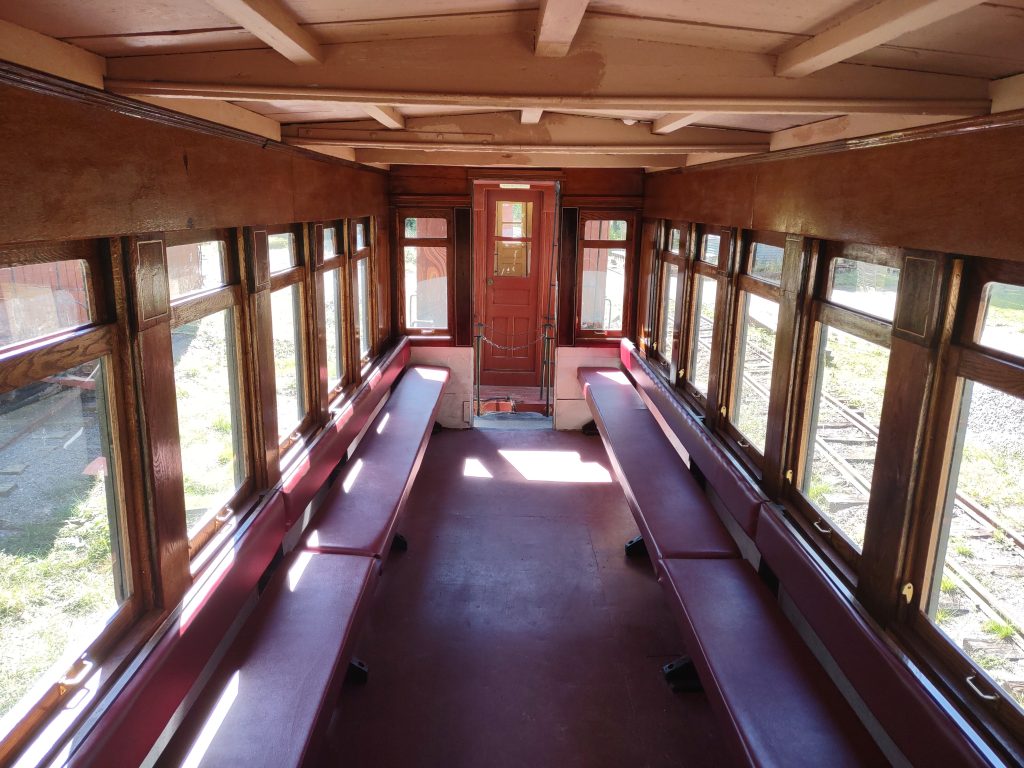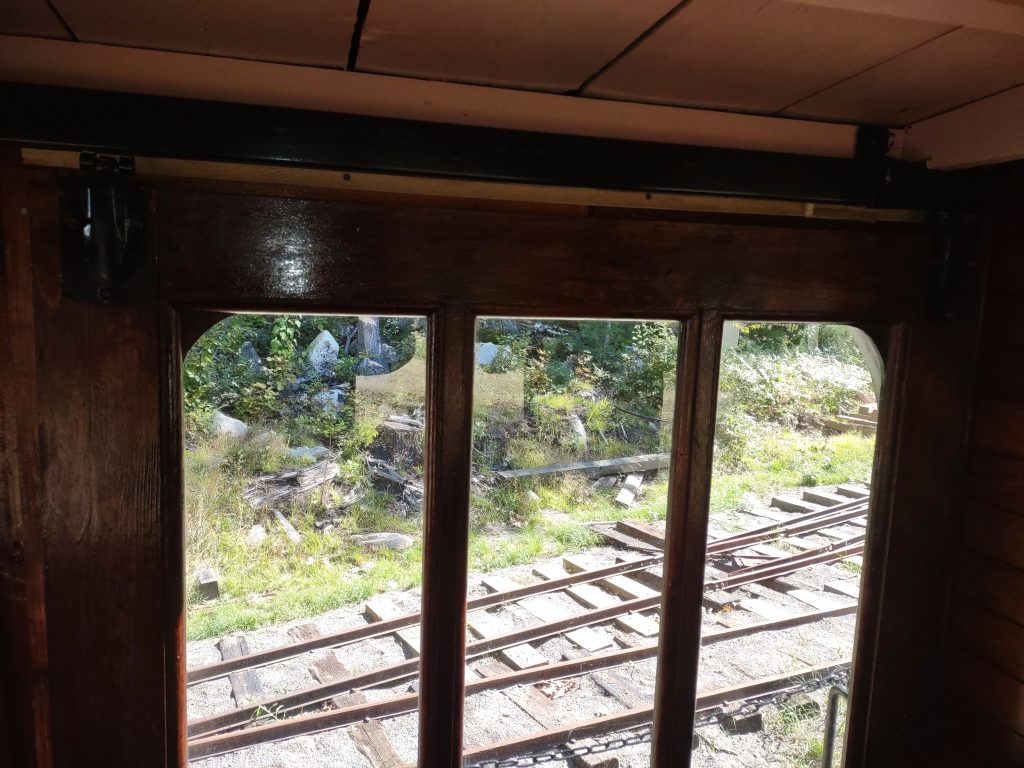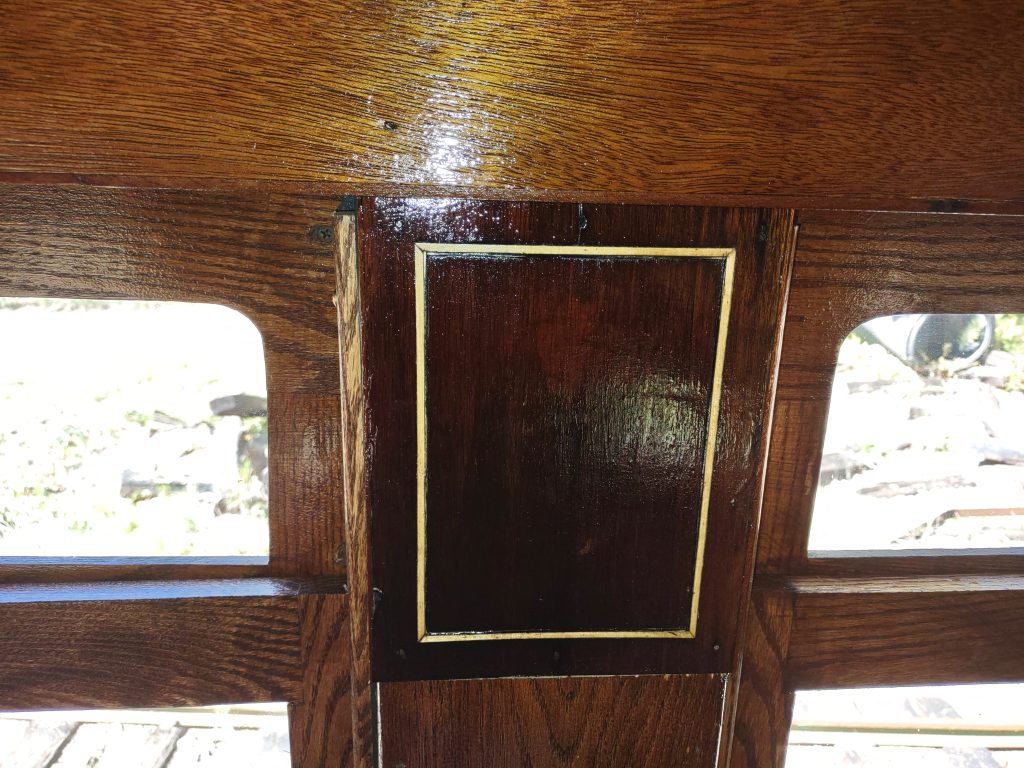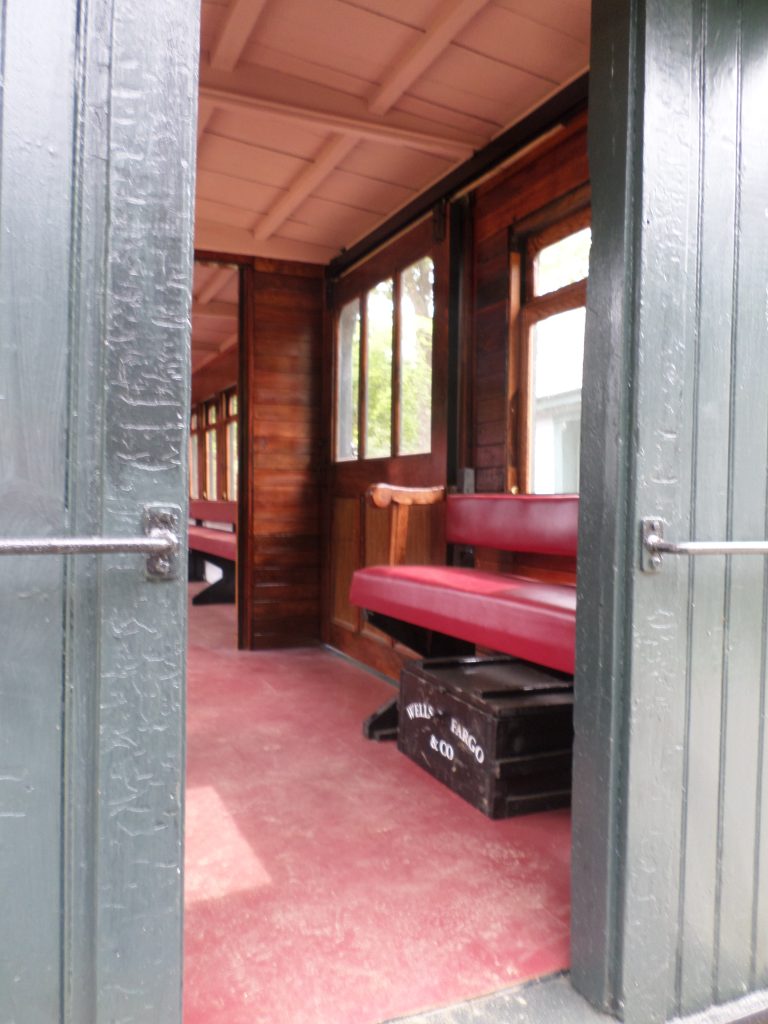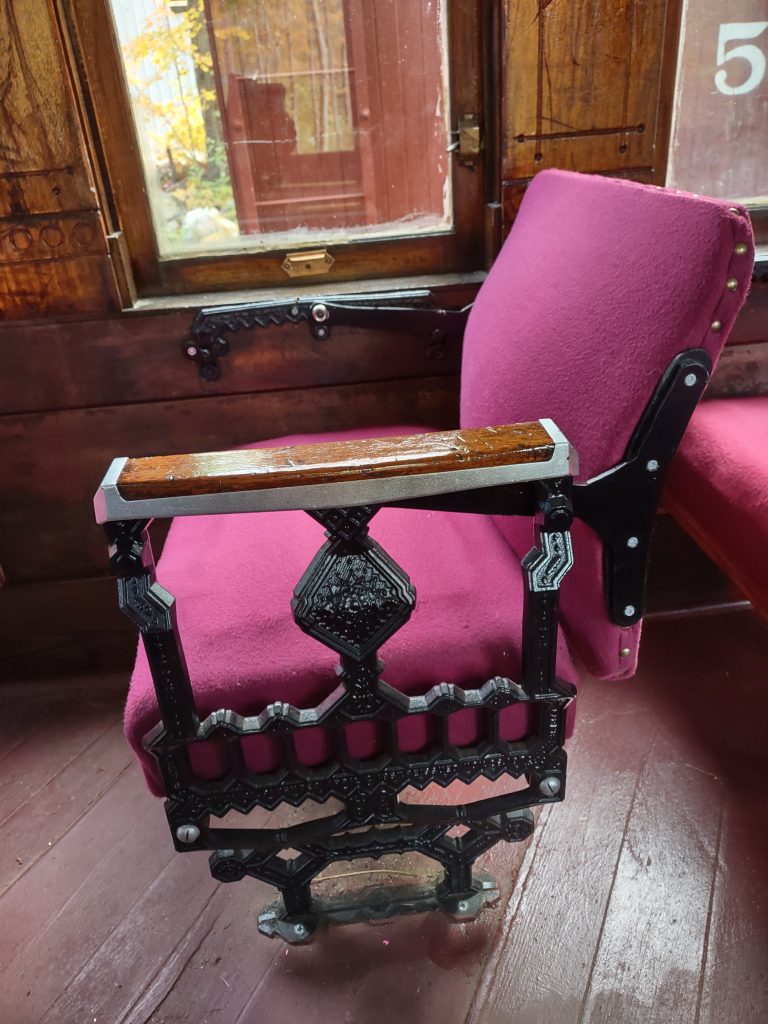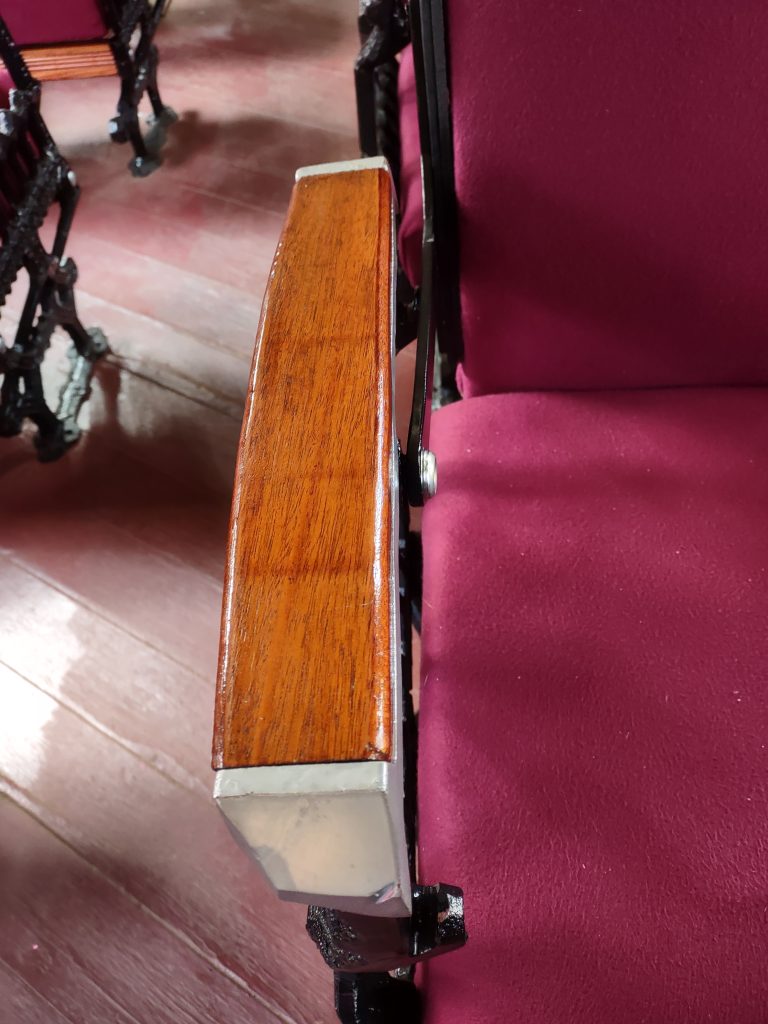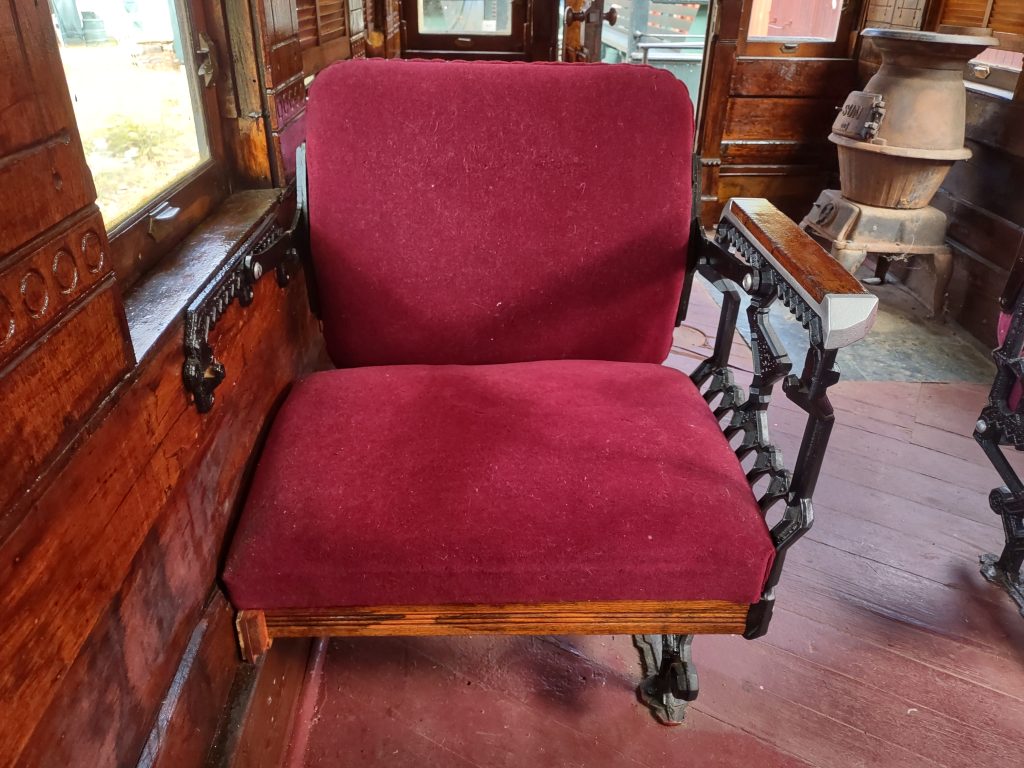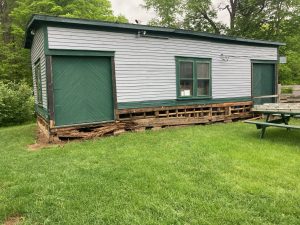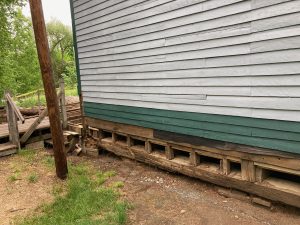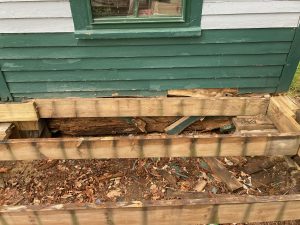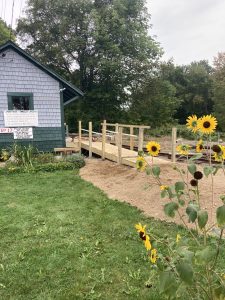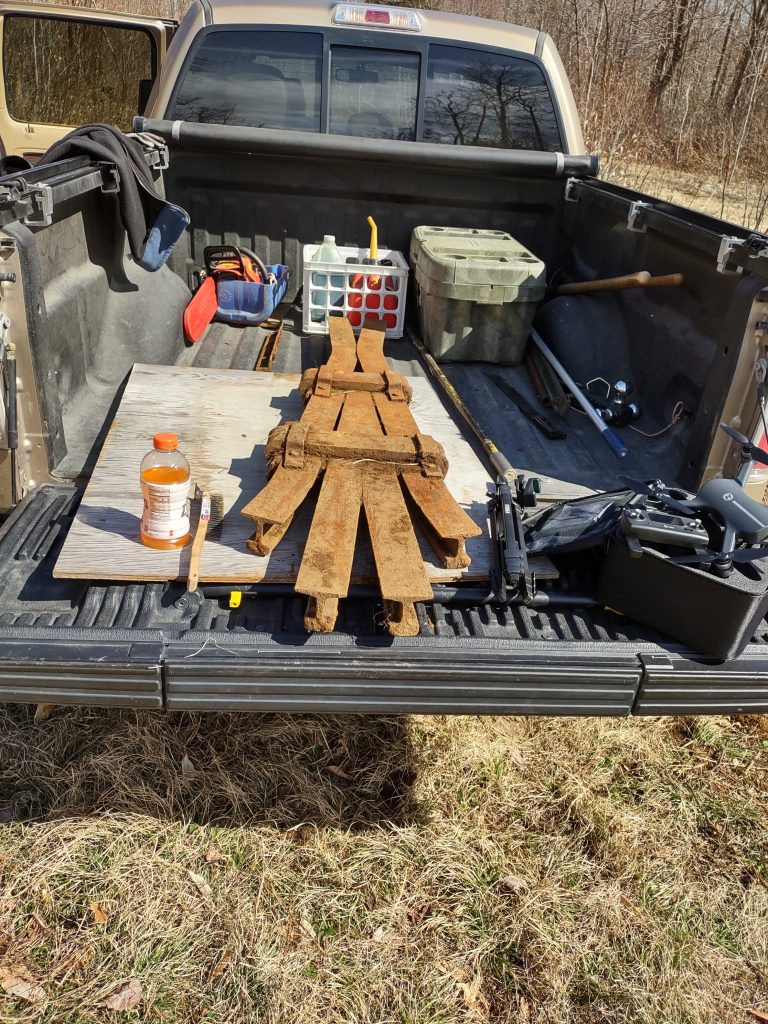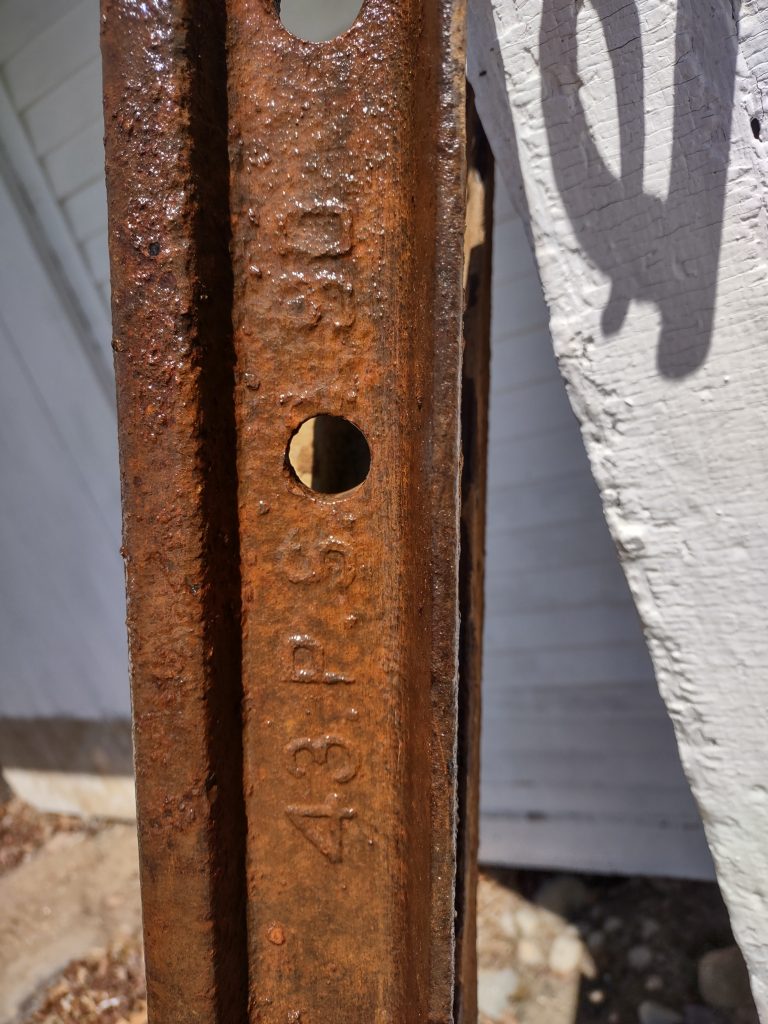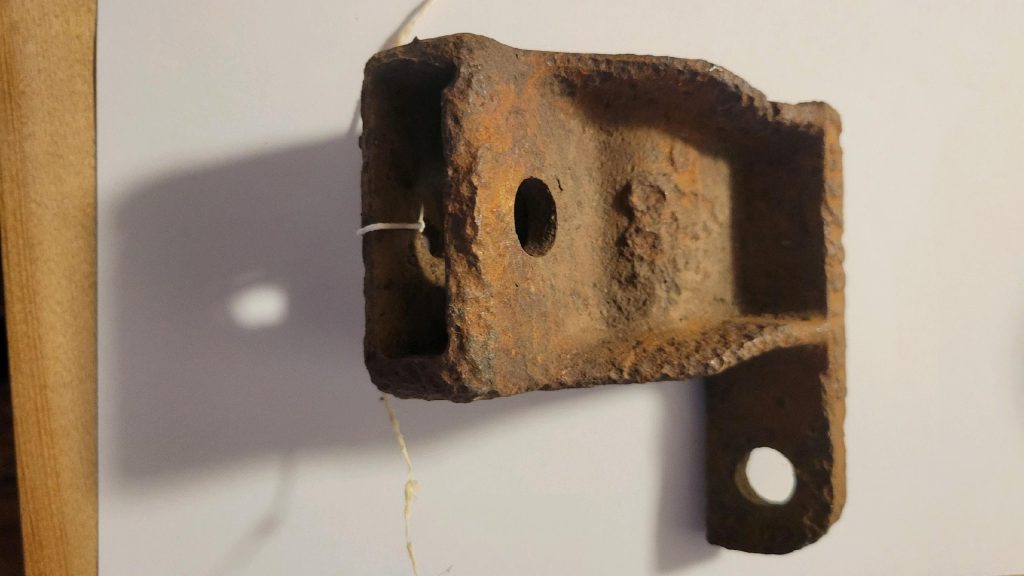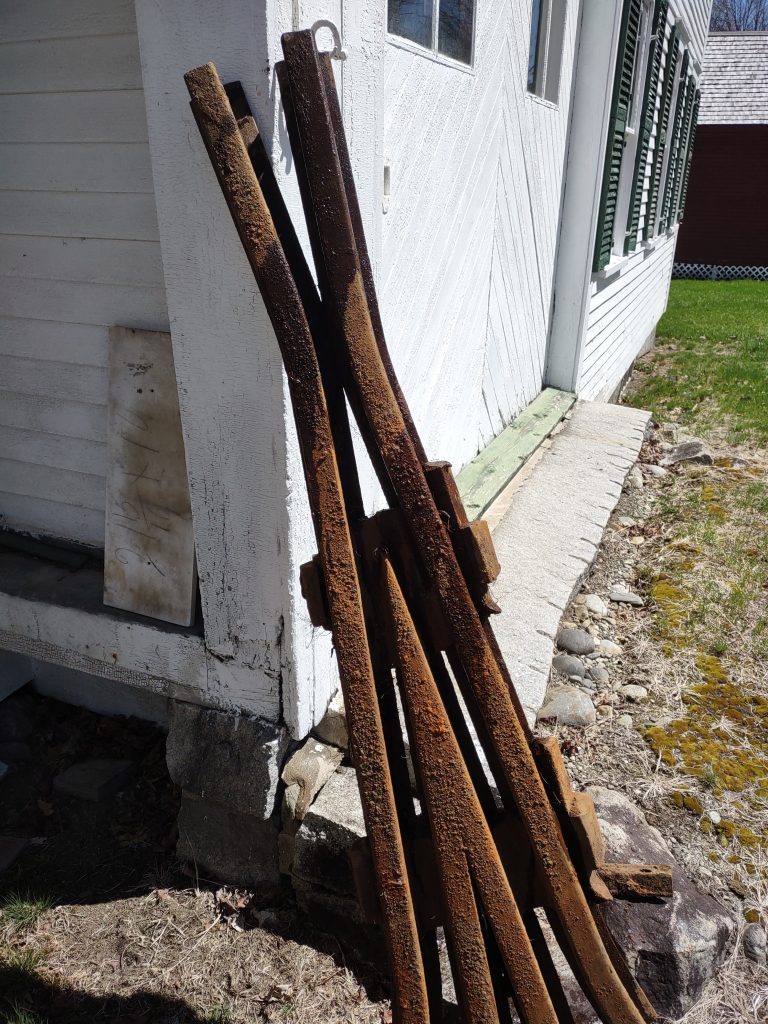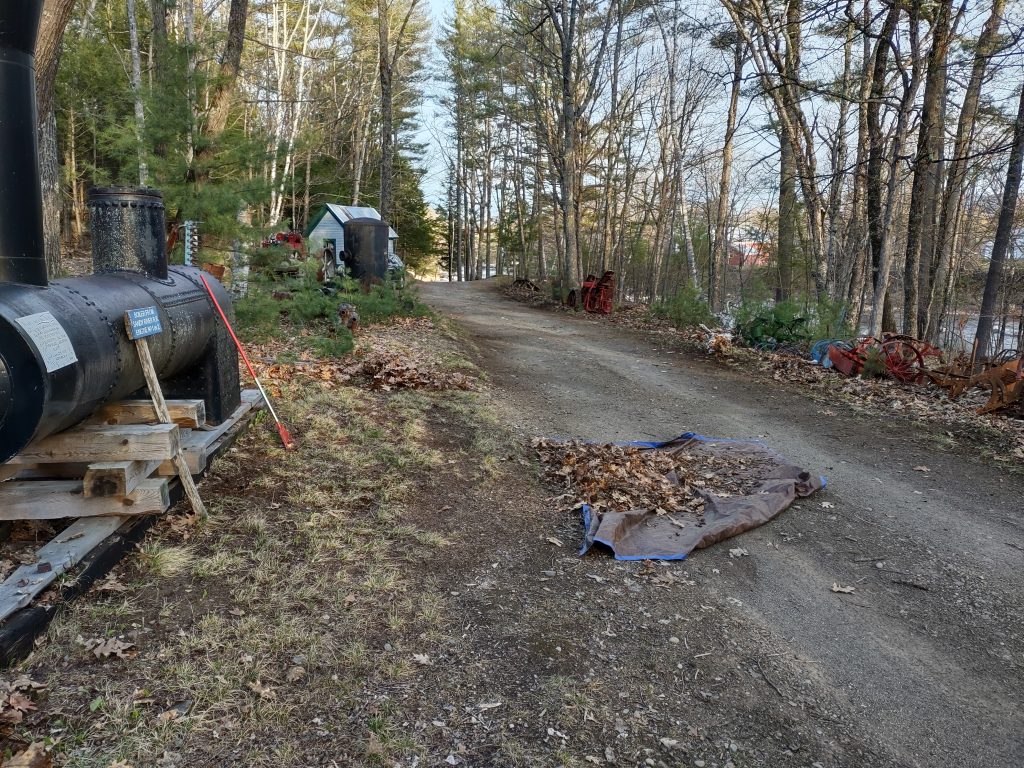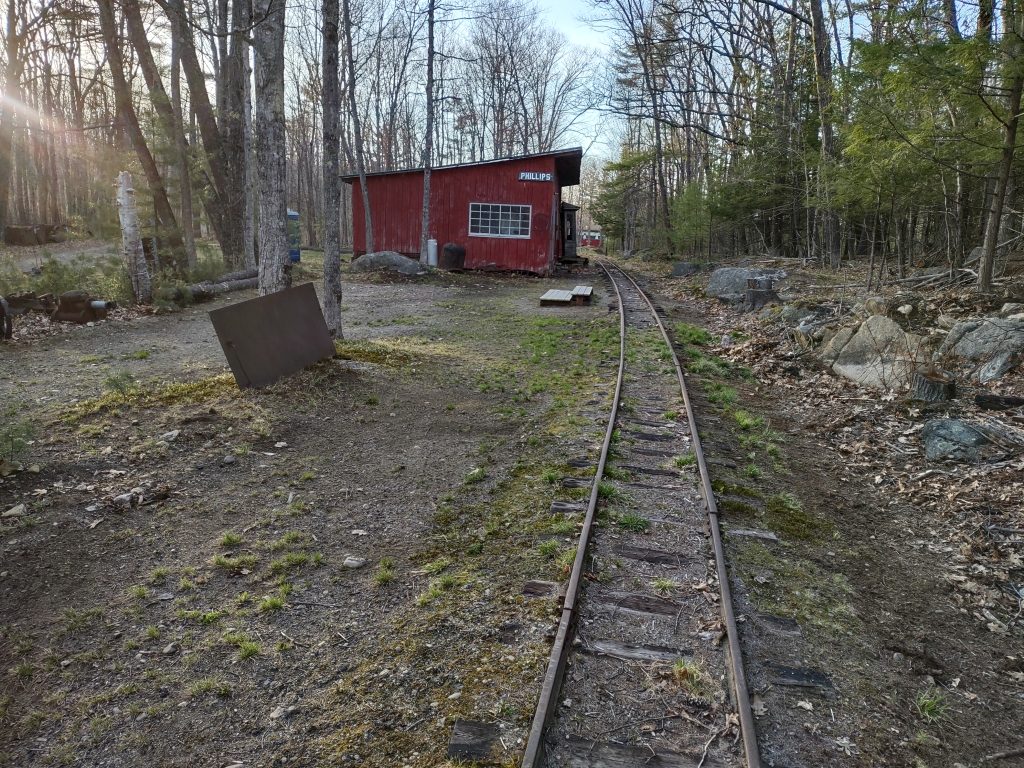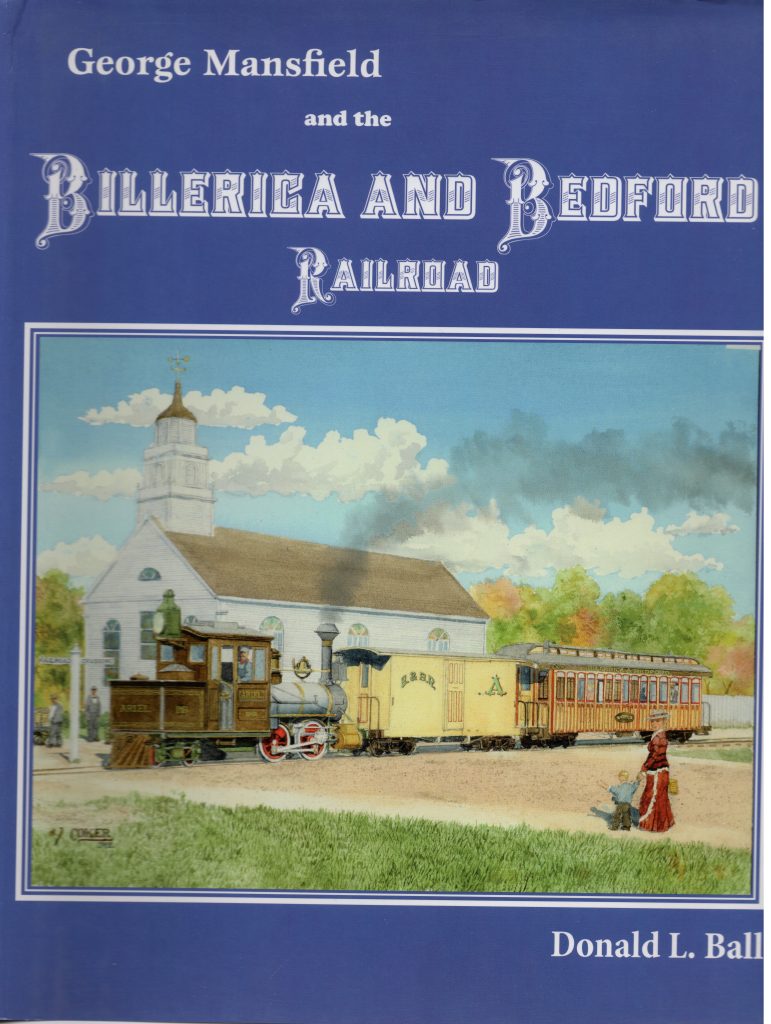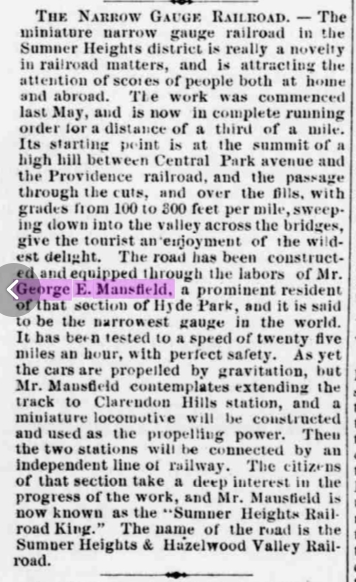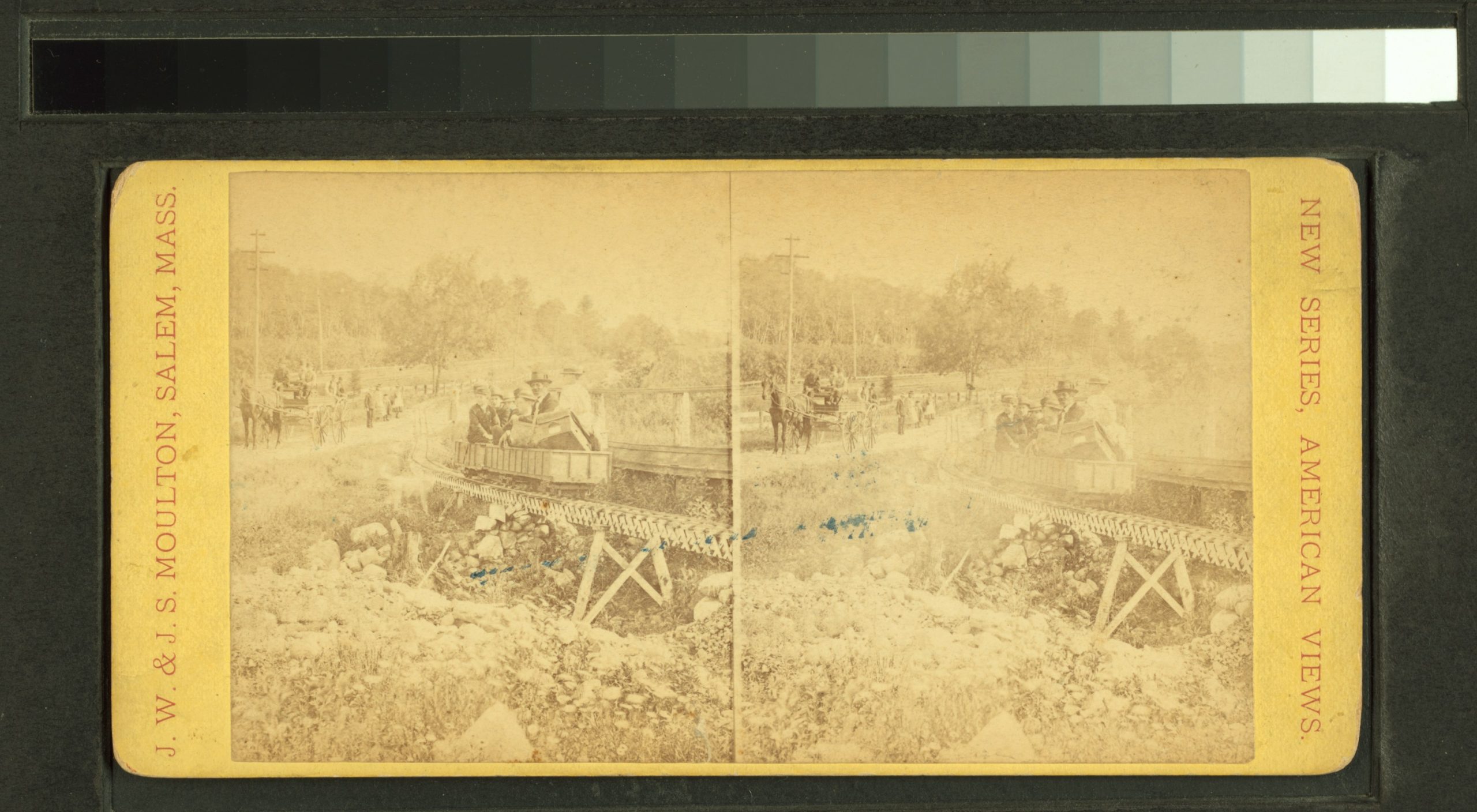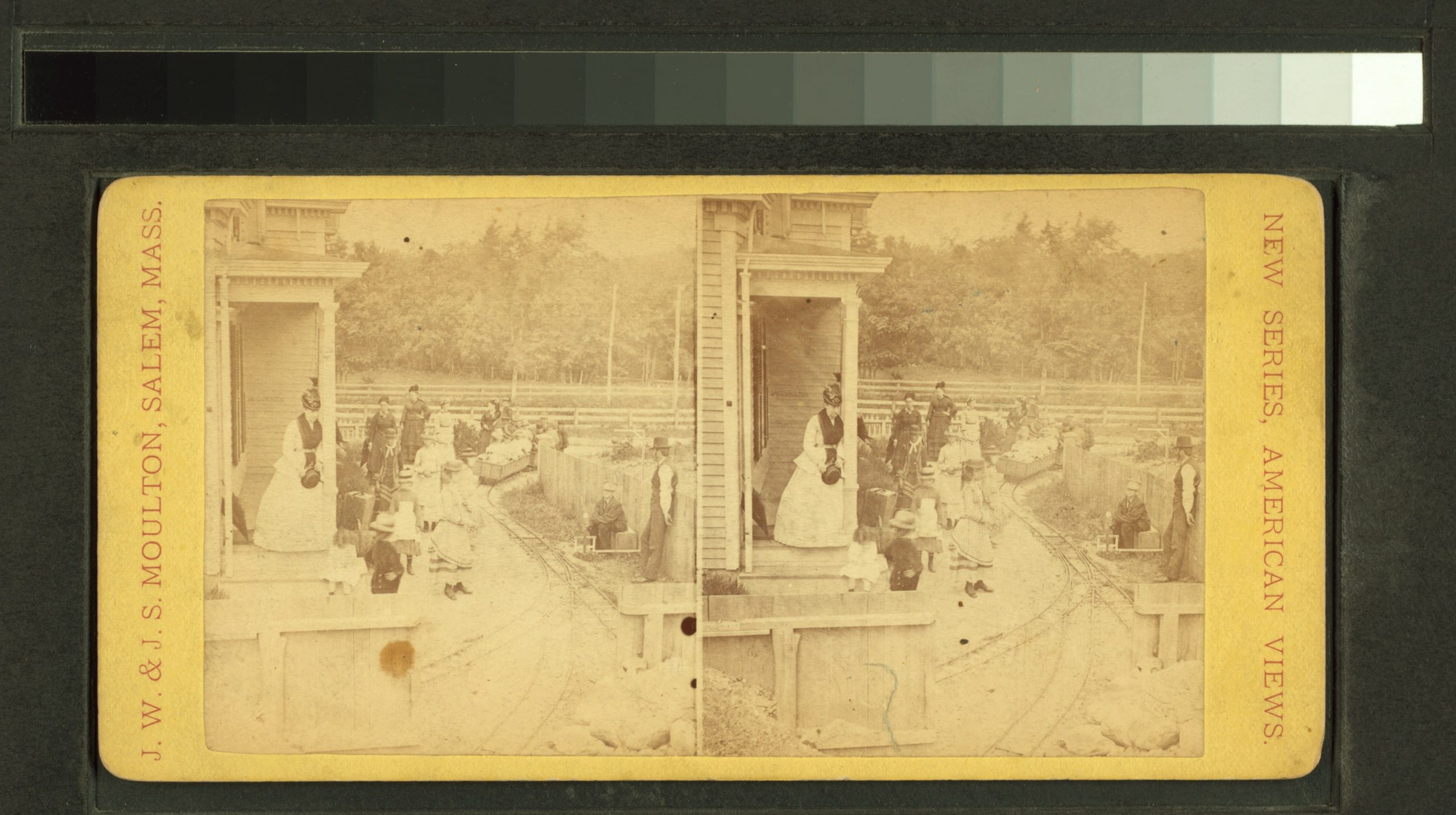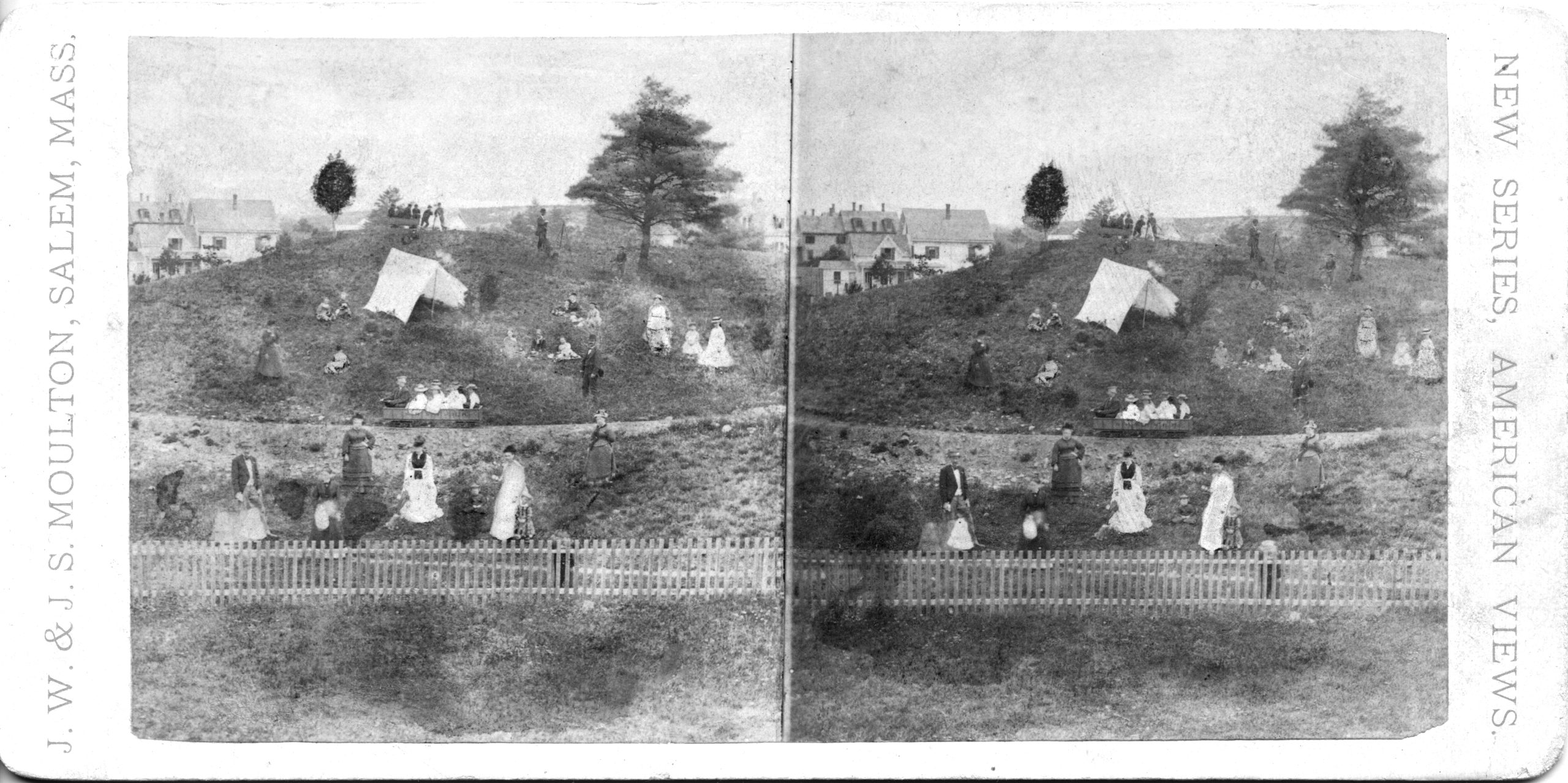Newsletter (November)
Bunkhouse Update:
Starting in the fall of 2021 and continuing through the fall of 2022, the bunkhouse has undergone deep cleaning and repairs. A lot of junk and broken items have been cleaned out. For example, a broken TV has been replaced with a flat screen. The bunkhouse is now put back together, the beds have new mattresses, and there is a new air filter running. The old couch in the living room has been tossed out and a leather loveseat and couch, donated by Sharon Barber, are set up in the living room. We already have a to-do list for next year, too: fix the washing machine, and possibly clean out a few trees along the side of the bunkhouse with a picnic table outside.
With these upgrades, the bunkhouse is now in tip-top shape so you can stay there when helping with operations or work projects when you come up to Phillips.
The kitchen has pots and pans to cook and the Edmunds supermarket is in town, as well as plenty of places in the region to eat at from cheap to high-end.
With things opening back up after Covid, we need members and volunteers to help with an operating schedule in 2023 and beyond in all facets!
The New Seats for No.23:
(The former No.33 has been restored, and is now renumbered as the “new” No.23. This is a former Bridgton & Saco boxcar that was converted to carry passengers at Edaville, and has been further updated by Al Houghton)
Besides the woodwork changes to No.23, all the seats were rebuilt, Al cut out the old center bench, and installed a bench seat on each side in the baggage section.
Further work Al did was to cut out openings and built freight doors. Al also installed mahogany paneling salvaged from the scrapped Maine Central coach that was falling apart at Sanders Station and was put to good use.
Along with the freight doors, Al cut new openings and made side and end windows, and then painted No.23. Sharon Barber then lettered it. No.23 was first used for Civil War reenactment weekend and the following operating weekend.
The following was a project update Al wrote in May 2022:
“The 14 window sashes are complete. Glass is being installed this week. I still need to make the 28 strips for the sides that hold the windows in place. I hope to have this completed in June. I am hoping to be in Phillips only 3 to 4 times, one full day to install windows in No.33.”
An outside view of No.23 in July as the new lettering and numbering were being applied by Sharon Barber.
Two views of the new lettering on No.23. The three views showing the new paint job and lettering also show the new window sashes Al mentioned above.
Inside No.23 with the newly restored bench seats. You are looking at the Reeds section house end of the car in this photo. On the right, you can see part of the new freight door that Al installed. In the foreground is an example of the mahogany paneling salvaged by Al.
Here are two examples of the new bench seats ends installed in the baggage section of No.23.
Inside No.23 with newly restored seats, looking towards the car’s Sanders end. The previous interior photo is right behind you in this photo. Besides the new woodwork, the inside of the car was also repainted.
Examples of the wood paneling Al salvaged from the Maine Central car.
A good view of the work done on No.23, here we see the outside paint job, the woodwork restored on No.23 baggage section. On the right is another example of the freight door Al installed. The strong box is being used as a prop in this view.
A Further Update on the 1884 Laconia Coach Seats:
Below in italic is from the newsletter sent in July, as an introduction in explaining the two separate seat projects:
“As already reported, the SR&RL was awarded $3000.00 by the Mass Bay Chapter, Railroad Enthusiasts to fabricate ten seats for Sandy River RR coach 6. This is a first stage in providing the 46 to 48 seats needed for the two Laconia cars. This is also a progression from the seat casting pattern made possible by a $1200 Amherst Railway Society grant in 2019 for creation of a pattern for the large seat end.”
Coach No.6, with 10 of its seats restored to the original style by Al Houghton, carried passengers for the first time in 3 years during Old Home Days in August on the Lantern train. It was a beautiful starry night with many patrons enjoying one leg of the trip on gondola 271.
“With a casting from Rick Knight and the conductor’s seat the total is 12 seats. With parts we had, the total is the one 60″ bench, fourteen “walkover” coach seats and the conductor bench.”
The foundry Al mentions is the Whitman Castings, Raynor St. Whitman, Massachusetts.
The following is by Al Houghton on May 9, 2022 as he was restoring the seats in No.6, a Laconia Car Company built car in 1884. Passenger car No.5 also being rebuilt is the sister car to No.6 both bought by the Sandy River railroad.
“(As the entire project is to fit the two cars, Sandy River 5 and 6, with the correct seats, parts are being stock-piled for the entire 44-some “walk-over” seats.)
Status of each of the several parts needed:
-Large seat end, cast iron: Have 5, one ready to install, four need finishing, machining. Four are at the foundry, awaiting initial cleaning. (I need to check on these, this week)
-Arm rest, cast iron: 17 castings picked up from foundry, 9/21/21. All have been finished, machined, painted.
-The armrests, complete with the mahogany inserts (38 seat rails at left of armrests)
-Wall bracket, cast iron: ten picked up from foundry, 9/21/21. All have been machined, painted.
Wall brackets machined and primed, ready for finish paint.
Below, materials from RR stock:
-Seat back frame, wood: made 23, ten of which are upholstered, ready to install, 16 more in Reeds building
Seat back frames in progress
-Seat bottom box, wood: have made eleven, four are upholstered as of 5/8/22. 25 more in Reeds building.
Arm rest inlay, Mahogany:
Have made 16, material planed and pre-cut for 10 more. (Material salvaged from the Maine Central coach)
-Lower bracket/seat support, wood: Made 11. These are poplar, purchased. The above parts are one per seat. The parts below are two per seat:
-Spacers, wood: (1/4″ thick spacers, each side of seat back) 24 made and painted. Also poplar
-“T” brackets (seat back supports). Have four. Will have 20 more made (1/4″ aluminum)
-Rails, Oak: Have made 38, 19 pair. Materials from RR stock
The seat rails are left-hand and right-hand, as only the bottom edge is rounded
There are some 32 miscellaneous screws and bolts in each seat. There is a stock of each on hand, more acquired as needed.
Upholstery materials:
Some fabric in stock, Jo-Ann fabrics, as needed (Foam is a standard 24″ X 72″, which is four seats 24″ X 18″. About 12 feet of 3″ jute webbing and 2 yards of fabric per seat)
Most, if not all, has been purchased. At this writing, ten seat backs and four seat bottoms are complete
Total spent to date, $2616.33
Still outstanding are the large seat ends. Will need 20 carriage bolts, 3/8″ X 4 1/2″ and I have not yet made contact to have the “T” brackets made. Also, the bench seat was re-made to the proper 60 inches and the correct cast end was used
Coach 6 seats: attached is a break-down of the multiple parts involved. (May have to make two to three posts, as the files include photos)
I have 4, of 9 large seat end castings here, 5 still at foundry. This may be $2000.00, but hopefully less.
I have not yet made the arrangements for the 20 “T” brackets that support the seat backs to be fabricated. The last ten were free, but that may not be the case this time.
Coach seat project to date, $2616.33, out of Mass Bay RRE grant of $3000.00 ($5000 requested)… and remove 3 to 4 seats from coach 6, prep and paint floor. One full day to install coach seats and prep the next section of floor and last, to install the remaining coach seats. (Coach 6 timeline depends on cleaning, machining painting seat ends, which I am going to do outside so as not to fill my shop with black iron dust)”
As a side note let’s not forget that in 2019, the work on No.562 the tool car was due to a Mass Bay Chapter, Railroad Enthusiasts donation.
The following photos are of the completed seats in No.6 during October 2022. The 10 seats are on the Dodge Road end of No.6. There will be no captions with the photos, they are self-explanatory!
Freight House Repairs:
Prior to the Spring Business meeting, we noticed sagging in the roof and at the doors of the Phillips Freight Station/Ticket Office/Gift Shop, and that the Sanders station was leaning away from the track, with some separation at the rear corner.
Melvyn Webber and his crew – Scott Wilcox, Keith Nebor, and David Eaton – began the work of removing clapboards and the boarding platform to inspect the sills. What they found was daunting. The sills, many floor joists, and framing severely deteriorated. Major work was necessary immediately to stabilize both buildings. The Board of Directors regards all the historic buildings as significant pieces of the Museum collection and we voted to undertake the repairs immediately. Considering the age of the buildings, and the number of times they have been moved, it is very fortunate that they have survived!
The first stage of stabilization was to jack up the building about 8” so that the rotted sills and joists could be replaced. New footings for the building were installed, first by digging a foot-deep bed, filling the hole with crushed rock, and 24” cement pads. Then the building was jacked up further, to 2’ high. The old platform was sloped towards the buildings, so lower portions of many wall studs and freight doors needed replacement as well. New clapboards were needed in several locations. The next step was to jack up the roof to level the peak. New posts and bracing were added. The passenger platform was then reinstalled, this time with the slope towards the track!
Sanders station was next. After it was jacked up, all the floor joists were sistered with a new joist installed beside each old one. The sills and front door framing were also replaced. Then the passenger platform between the two buildings was rebuilt, and a ramp suitable for guests using wheelchairs was built.
Thanks to the hard work of Melvyn and his crew, these buildings will enjoy a long future. Both Bill & Rick said you can no longer roll a marble from the track end of Phillips Freight Station/Ticket Office/Gift Shop to the other end!
The S.R. & R.L. are proud new parents:
In May, we became the proud parents of a new bouncing switch frog weighing in with a 35-pound rail. It was only 119 years old when it came to us! This is the ONLY 100% documented switch frog, not from the S.R. & R.L., but even more rare – the Madrid R.R.
Allan Socea first saw the frog in the early 1970s on the Madrid railroad in No.6, at the rollover. After Allan saw it the frog got in a fight with a bulldozer and was buried until it was rediscovered in May 2016 by Allan and Kenny Wing. It was not until 2021 that we got things aligned so we could go after the item, and after three visits in 2021 it kind of got lost!
A frog is used in a switch to allow a train to go from one track to another. The name frog is still used to this day in the railroad lexicon. The condition of the frog is very good except the coat of rust on it. The hope is to get it sandblasted and then a coat of oil over it to protect it, and see what, if any, cracks there may be. At this time the frogs needed or planned to go in are measured for those jobs. If there are no issues with the metal, who knows if it could be used…a S.R. & R.L. frog in use what a thought!
Here we see the frog after we got it into the truck.
Here we can see the stamp on the rail 43 PS bolt hole 1 90. Allan feels the 1 90 is a pattern date of January 1890. The PS is the stamp of Pennsylvania Steel, the first maker of steel rails in the U.S. If interested in this article, Google the history of Pennsylvania Steel – it is interesting.
This piece was also found in the area of the frog and was how the stock rail was attached in the switch. These two pieces show there was a frog at this location and not a freak accident that both showed up at the same location.
Here is the frog at the Phillips Historical Society; Allan wanted it donated to them. Allan wants this to be seen by people as an example of the past S.R. & R.L. Due to its size, and the fact that it would be on the floor, the Historical Society thought it could be a tripping hazard in the railroad room. So the S.R. & R.L., P.H.S. and Allan agreed to give it to the railroad. So now the frog was placed on two stumps above the ground next to the Maplewood flag stop and the roundhouse for all to see.
Videos
Have you checked out the S.R. & R.L. YouTube channel yet? If not, then check it out. Videos are now being reposted back up on the channel. Each video has an introduction explaining the S.R. & R.L., the webpage’s gift shop, and a pitch for volunteers. The hope is with the added exposure we get new volunteers; we need more working hands and exposure to a young age group! It also allows those members who cannot make it due to distance to experience the sights and sounds of events as they happened.
The videos will be a mix of present events; the first one covered the November 6, 2021 workday weekend. Then there was part No. 1&2, a deep dive into the Mt. Abram branch from the third trestle to the Gilbert mill. While filming the Mt. Abram video, we found the wooden turntable pit with its metal and rock parts, which has led to a third video because no one seems to know what the found parts are. I believe this is due to their being narrow gauge, their 1886 age, and the fact that most of the surviving S.R. & R.L. turntables were metal Maine Central standard gauge ones cut down to size.
In progress as of April 2022 – Signals & Semaphores at Phillips & Strong. This is turning out to be a wild video in the new information and the car barn being put up between 2019-20. Two events are planned in May, and an interview from 1996. You can help increase exposure for videos by sending them to those you think would enjoy them. If you belong to a certain type of group and think they would enjoy them, by all means, do it! It gets our message/exposure out there and hopefully turns into riders and volunteers.
Picnic area
With Sharon’s vision, the picnic table area was cleaned up, racked, and mowed in early May. A short video has been made of this area highlighting it for visitors who know about the railroad, or those coming to the area looking for things to do with the kids. The hope is we can get this posted so that members can spread this short snippet around as a form of advertisement for the railroad.
Along the S.R.R.L.: Nooks and Crannies of Franklin County:
“I found something that may interest you”
By Don Ball
(I will write this as two sections and it will be under Don’s by-line because at some point Don was going to release the information in the second part.)
We have a new member to the Baker Street Irregulars with a contribution. It is unfortunate it will be his only one. When I emailed Don Ball in March with a question about a 2010 Phillips semaphore article sent to me in November 2020, his wife, Becky, informed me Don died on January 21, 2022. This article’s title comes from Becky as she stated Don would say this to others when he found something useful, like the above semaphore article.
For those who are not familiar with the name, Don wrote George Mansfield and the Billerica And Bedford Railroad in 2011 and an unpublished addendum to that book in 2019. Don also wrote The Genealogy of the Locomobile Steam Carriage, 1899-1904 in 1994, as well as an unpublished book the Sacramento River Valley Railroads.
I would describe Mansfield and the Billerica And Bedford Railroad as the unauthorized biography of George Mansfield. If you have not read it, I highly encourage you to do so, especially if you are a fan of the Billerica & Bedford and Sandy River railroad history or just narrow gauges in general.
I was lucky to have met and known Don and his wife for over a decade. When we talked about Mansfield, Don would just call him “Georgie,” or just George to me. When I met Don and Becky, they were on a trip to the Boston area from their home in Blue Springs, Missouri. They were doing last-minute follow-ups for the forthcoming Mansfield book. It was a great day. We later took them to Pier 4 for a late lunch; I’m not sure if it was for the harbor view or the popovers.
Don was what I call a “rock turner” or a “dumpster diver.” He followed every bit of information up, finding new information even though it seems you are in an underground rabbit warren of disjointed information. His Mansfield book to me rivals the “rock turning” you find in Crittenden’s The Maine Scenic Route or Jones’ Two Feet Between the Rails.
It was Don who found the two P&R photos, never seen before, of the baggage car No.5 at Rangeley with a specific date of November 1905. That was an “I have found something that may interest you” example of an email I received from him out of the blue. He was just searching online the hard way… not using Worldcat, but individual searches. The P&R photos were from the Detroit Public Library Ford Collection. Are you really going to look in a Ford collection for narrow gauge or train photos?
Even after the Mansfield book was published, Don would sometimes stumble across new articles. In September 2019 he found another Mansfield article (see below) from the August 14, 1875 Norfolk Gazette. He was delighted when I gave him my Boston Public Library log-in information so he could search their in-house newspaper collection from home for further Mansfield information.
Part Two
As Paul Harvey used to say, “now for the rest of the story.” It was about three years ago that I received an email from Don with photo attachments. I could not believe what he sent! In keeping with a Boston theme, to me this was his “Big Papi” walk off grand slam. Don was again searching individually when he discovered in the New York Public Library online photo collection two stereoviews of Mansfield’s Summer Heights & Hazelwood Valley Railroad. That railroad only operated for about six weeks in the summer of 1875, when George lived at the corner of what is now Providence and Arlington Streets in Hyde Park.
A great view showing two of the cars Mansfield built to demonstrate what he was trying to prove with the narrow gauge concept. This is where the present-day warehouse is across from where Mansfield lived. They will be headed along where the present-day mainline is by M.P. 221 in about 100 feet. When you blow up the photo, you can faintly see the tracks.
The two cars are bringing in what I believe is bagged coal, showing that Mansfield even had sidetracks here. After Don sent this, I went back to the house, met the present owner, and was able to look at the lot spot on. What is shown here has changed because the house had a later addition. The fence line has not changed, nor the switch with a “switch tender.” Note above this person what appears to be a semaphore or switch position indicator. Standing next to the fence facing away is Mansfield.
The back of the stereoviews showed what was available in this series along with information about what Mansfield was doing.
Well, needless to say, this started an all-hands-on-deck moment to find the Moulton brothers that took the photographs; I had no luck in their Massachusetts or New Hampshire locations. We hit up the historical societies in the respective towns and areas where the brothers operated, along with the Hyde Park Historical Society, but still without luck. With another example of leaving nothing unturned, about a year later Don was doing eBay searches with the brothers’ names when he found the following:
This stereoview has been cleaned up and enhanced by Rezendes Photography; a prior owner had kids and they used color markers on it. It took quite a while before I got this back and I know Don was still searching for the rest of the series listed in the views. I believe this scene was taken along the dead-end section of Providence Street. This location would have been just west of the first view. A good part of this hill is now gone. A business is now there with a massive retaining wall. To the right of the car is Mansfield. If you enlarge the photo, you can see where Mansfield stenciled the railroad initials on the cars.
Mansfield, the endless promoter, has now lost his greatest promoter, Don Ball, and we lost one hell of a rock-turner.
(Don’s wife has graciously donated copies of George Mansfield and the Billerica And Bedford Railroad to the railroad which we are selling. If interested in a book, contact Bill, as they are not on the gift shop page yet.)
76 Years Ago on the Cranberry Branch R.R.
This is the last of the snippets from Edaville, culled from their newsletter:
August 1946
“…Earl Knight and Johnny Fava have tackled the No.4 Monson engine with the weapons customarily used to restore locomotives to health and vigor. At the moment they have her cab and tank off preparatory to replanking the deck. They’re also making plans to either weld or patch the broken main frame inside the ashpan and make it possible for No.4 to once more work like the proverbial steer hauling heavily loaded cars up and down the line. She will also get a lot more surgery, plastic and metallic. Then, new pipes and gadgets must be put on and her boiler lagged; she will get a set of replacement wheels under her tank and plenty of attention to driving boxes, automatic couplers installed, and a coat of much-needed paint. No.3, too, will have about the same kind of work done on her anatomy.
A few days ago Badger and Reimels headed north with a slat-body truck and visited Bridgton, Maine, to get some car seats from the “Pondicherry” and the parlor coach that Mr. Atwood recently purchased from Edgar Mead. They’ll also view the possibilities of bringing those cars to Edaville along with the ex-Sandy River railbus No.4 which was included in the deal.
Two flatcars have been fitted with lengthwise benches so the visitors may now ride in the open air.
Sept. 1946
“….Very little has been done yet to repair the two Monson engines…The C.E. Hall & Son will soon move another dozen or so cars down from Maine along with the No.8 engine, which will complete the job for good.
Jan 1947
‘Among the improvements in vogue is the 30-foot turntable brought down from Bridgton in November…Useful pieces of railroad equipment still come in. The other day Mr. Atwood took account of stock and found: a locomotive whistle and a vacuum gauge from Edgar Mead, some railroad lanterns from the ex-president of the Bridgton & Harrison Ry., Lester Ames; a couple of whistle posts and some excellent carpeting for coach aisles from Mr. Leavens; …
Feb 1947
Was the last issue published, due to the cited .30 per copy to print and mail

